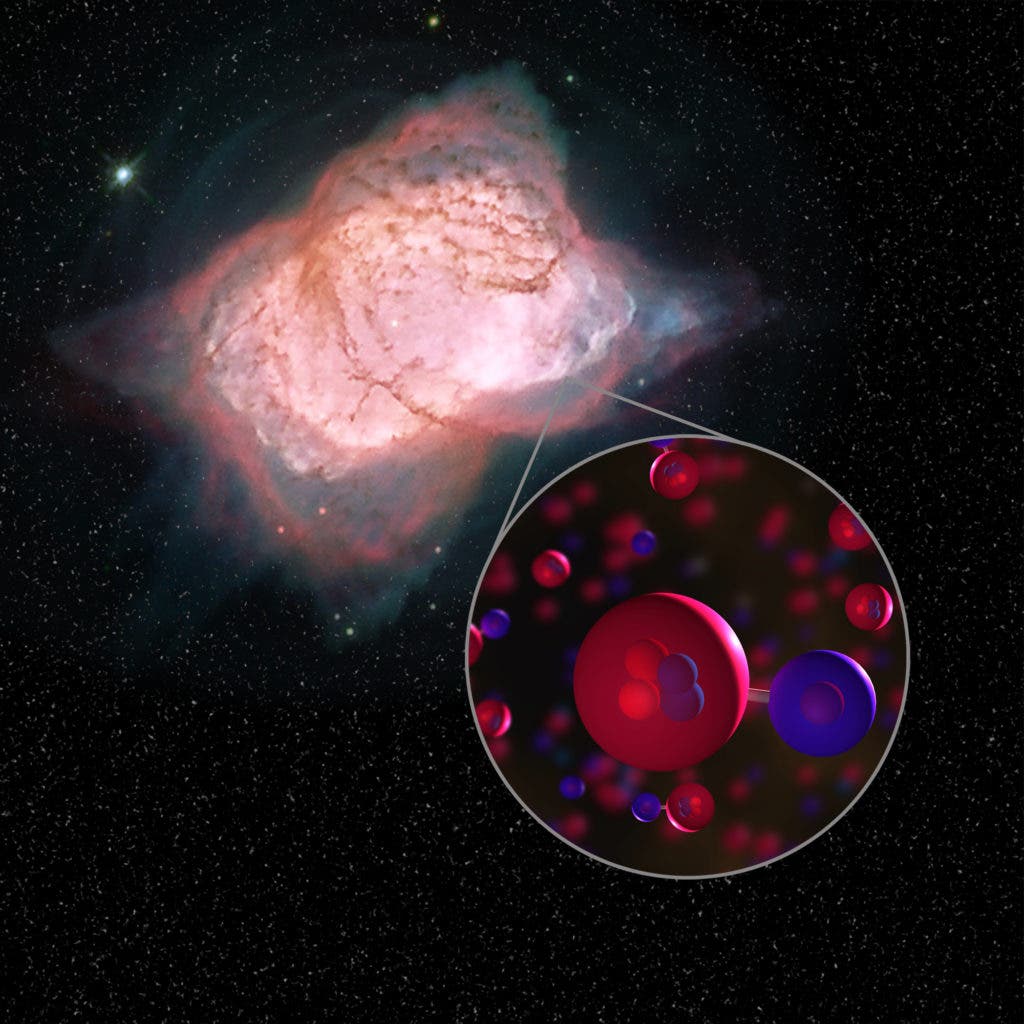
About 100,000 years after the Big Bang, a blink of an eye on the universe’s timescale, the primordial atoms helium and hydrogen combined to form the first molecule, helium hydride. Physicists believe that this molecule’s formation helped the young universe cool down, allowing stars to form. Helium hydride should still be present in some parts of the modern universe but it has never been detected in space — until now.
“The lack of evidence of the very existence of helium hydride in interstellar space was a dilemma for astronomy for decades,” said Rolf Guesten of the Max Planck Institute for Radio Astronomy, in Bonn, Germany, and lead author of the study published in the journal Nature this week.
The discovery was made by NASA’s Stratospheric Observatory for Infrared Astronomy, or SOFIA, the world’s largest airborne observatory. Flying up to 13,700 meters (45,000 feet), SOFIA makes observations above the interfering layers of Earth’s atmosphere, taking off and landing for each observation. Inside a modified Boeing 747SP jetliner, scientists fitted state-of-the-art instruments such as the German Receiver at Terahertz Frequencies (GREAT) instrument that can be tuned to the frequency of helium hydride, similar to tuning an FM radio to the right station, and search for it in space.
NASA researchers pointed SOFIA’s instruments onto a planetary nebula located 3,000 light-years away called NGC 7027. Since the 1970s, scientists had suspected that this is one of the best places to look for helium hydride but until now they were lacking the proper tools.
“This molecule was lurking out there, but we needed the right instruments making observations in the right position — and SOFIA was able to do that perfectly,” said Harold Yorke, director of the SOFIA Science Center, in California’s Silicon Valley.
Finding evidence of the primordial molecule validates our current models of how the universe came to existence. According to the theory, after the universe started to cool down, hydrogen atoms interacted with helium hydride, leading to the creation of molecular hydrogen — the substance primarily responsible for the formation of the first stars. Once the first stars appear, they could forge heavier elements that would eventually disperse into the universe forming asteroids, planetoids, and planets.
“It was so exciting to be there, seeing helium hydride for the first time in the data,” said Guesten. “This brings a long search to a happy ending and eliminates doubts about our understanding of the underlying chemistry of the early universe.
Was this helpful?



